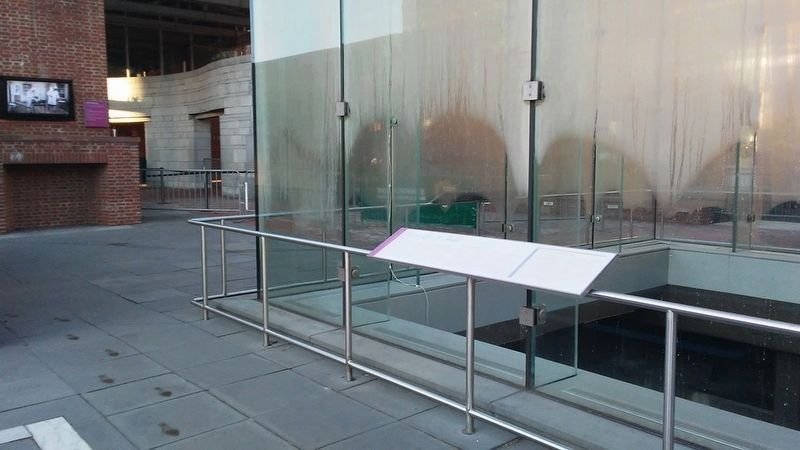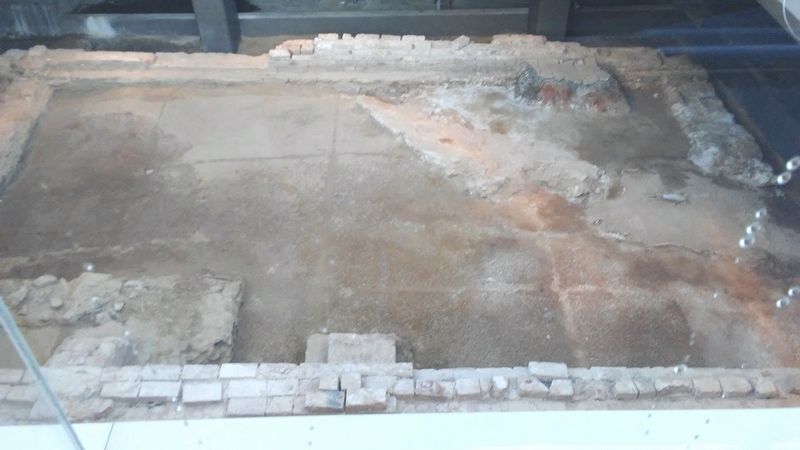History Lost & Found
Making History
History is not neat. It is complicated and messy. It is about people, places, and events that are both admirable and deplorable. Here at the site of the house where the first two presidents of the United States resided from 1790-1800, this definition comes into stark focus. The President's House exposes the core contradiction at the founding of this nation: enshrinement of liberty and the institution of slavery.
While important moments in the early history of the nation took place here, slavery casts a shadow over those accomplishments. For many, the fact that President George Washington transported enslaved African descendants to this house from Mount Vernon, his plantation in Virginia, is profoundly disturbing. As the new federal government embraced the lofty concept of liberty, slavery in the President's House, as in the new nation, undermined the meaning of freedom and mocked the nation's pretense to be a beacon of liberty.
If we are to understand how a nation founded on the principle that "all men are created equal" could also somehow embrace and justify slavery, we must examine the context and effect of this contradiction on the lives of Americans of every race and condition. The President's House offers an opportunity to draw lessons from the past as we examine the present and engage the
future.
Digging for History
One of the challenges of telling the story of Africans and their descendants in Philadelphia and elsewhere has been locating information about their lives. At first they were violently kidnapped and enslaved, torn from their homes and families, and deprived of their African names and way of life. After enduring a gruesome ocean crossing, they were sold and separated again. Despite these deprivations, they created new families and communities strengthened by deep spiritual beliefs and cultural practices that were passed down from generation to generation.
The lives of the enslaved differed by locations, labors, comforts, and owners. Often prohibited by owners, and sometimes by law, from learning to read and write in America, the enslaved left little in written documents. Much of what we know comes from treasured oral traditions, from records of sales, histories maintained by some plantation owners, advertisements for fleeing slaves, and varied documents and genealogical records. Such sources give important insights into the lives of the enslaved people who occupied this house.
Conflict and Collaboration
At first the National Park Service minimized the importance of the President's House while it focused on the construction of the Liberty Bell Center. But, in the shadow of Independence Hall, another story——the
The National Park Service had agreed to a nominal interpretation for this site when the African American community, historians, scholars, and concerned citizens insisted on an expanded vision. Now this site has been transformed into a space that honors the lives of those enslaved——whose stories have just begun to be told——framed by the history of the new nation from 1790 to 1800 when Philadelphia was its temporary capital.
Erected by National Park Service.
Topics. This historical marker is listed in these topic lists: Abolition & Underground RR • African Americans • Government & Politics. A significant historical year for this entry is 2007.
Location. 39° 57.023′ N, 75° 9.003′ W. Marker is in Philadelphia, Pennsylvania, in Philadelphia County. It is in William Penn Annex East. Marker is at the intersection of Market Street and South Independence Mall West (6th Street), on the right when traveling east on Market Street. Touch for map
Other nearby markers. At least 8 other markers are within walking distance of this marker. A different marker also named History Lost & Found (here, next to this marker); a different marker also named History Lost & Found (here, next to this marker); "…is hereby empowered to sieze such Fugitives" (here, next to this marker); Awarding a Peace Medal (here, next to this marker); Memorial (here, next to this marker); Washington's Death and a Renewed Hope for Freedom (here, next to this marker); "I and my household" (here, next to this marker); The Dirty Business of Slavery (a few steps from this marker). Touch for a list and map of all markers in Philadelphia.
Also see . . .
1. History of the President's House Site. (Submitted on April 1, 2017, by William Fischer, Jr. of Scranton, Pennsylvania.)
2. President's House Site: Uncovering the Past through Archeology. (Submitted on April 1, 2017, by William Fischer, Jr. of Scranton, Pennsylvania.)
3. Washington’s Will: A Decision to Free His Slaves. (Submitted on April 1, 2017, by William Fischer, Jr. of Scranton, Pennsylvania.)
Credits. This page was last revised on February 2, 2023. It was originally submitted on April 1, 2017, by William Fischer, Jr. of Scranton, Pennsylvania. This page has been viewed 215 times since then and 8 times this year. Photos: 1, 2, 3. submitted on April 1, 2017, by William Fischer, Jr. of Scranton, Pennsylvania.


